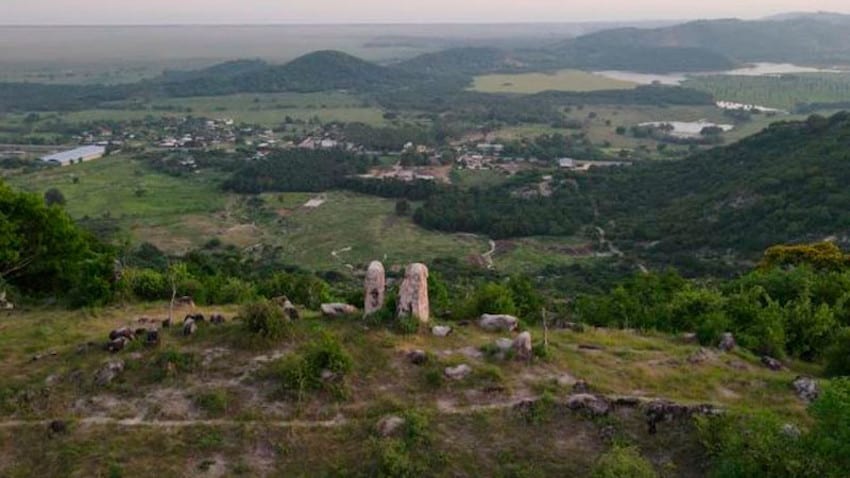Archaeologists discover lost 1,300-year-old town with ball game pitches
Story by Jacob Kessler •
18h

The ancient settlement spans over 79 acres.
© Jam Press/INAH
In a remarkable archaeological discovery, a long-lost settlement, potentially dating back over 1,300 years, has been uncovered in Mexico.
A team of archaeologists from Mexico's National Institute of Anthropology and History (INAH) stumbled upon this pre-Hispanic town in Guerrero state's Costa Grande region, situated along the Pacific coast.
The sprawling settlement spans an impressive area of approximately 79 acres on communal land in Tecpan de Galeana municipality.
This groundbreaking find came to light when locals alerted archaeologists about several mounds in the vicinity.
During a three-day surface survey, researchers documented a total of 26 minor mounds encircling a central, monumental mound towering at 73.5 meters high.
More:
https://www.msn.com/en-us/news/world/archaeologists-discover-lost-1-300-year-old-town-with-ball-game-pitches/ar-AA1eXQbD
~ ~ ~
INAH confirms discovery of pre-Hispanic settlement in Guerrero
MND Staff
August 2, 2023
Until now, Apancalecan was known only through references in pre-Hispanic codices – but may now have finally been found. (Frédéric Henri Jean-Marc Bochet/INAH)
An archeological site believed to be the important Aztec settlement of Apancalecan has been discovered in the Costa Grande region of the state of Guerrero, about 100 km north of Acapulco, announced archaeologists from the National Institute of Anthropology and History (INAH) this week.
Until now, Apancalecan was known only through references in codices — pictorial manuscripts that recorded the pre-Hispanic history of Mexico. Apancalecan’s name in Nahua means “place of the houses with water channels,” and it is referred to as a “main town” or “head town” in the Matrícula de Tributos codex of the early 1500s.

Apancalecan glyph
The glyph representing the town of Apancalecan. Its name in Nahua means “place of the houses with water channels.” (Mesolore)
The site in the El Cerrito community of Tecpan de Galeana — not far from the highway that connects Zihuatanejo and Acapulco — includes one large mound and “26 minor mounds … such as altars and elongated structures in a good state of conservation … as well as residential areas and ball-playing fields,” INAH noted in its Tuesday press release.
Located 850 meters from the Tecpan River and 1 km from the Tetitlán Lagoon, the complex also includes “deep holes … possibly associated with water storage and dams,” according to anthropologist Rodolfo Lobato Rodríguez.
. . .

Aztec ruin
The town, which predates the arrival of the Spanish, has been lost for many years. (Frédéric Henri Jean-Marc Bochet/INAH)
More:
https://mexiconewsdaily.com/culture/pre-hispanic-settlement-discovery-guerrero/